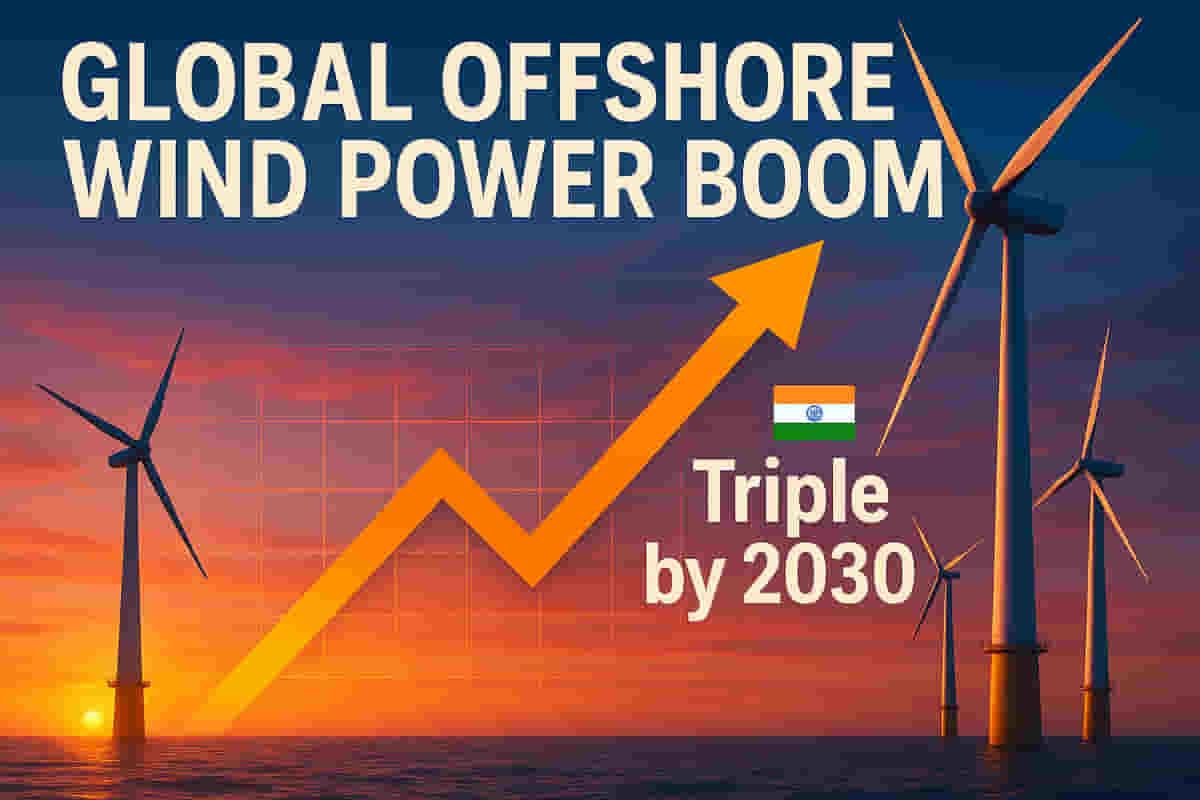Global Offshore Wind Capacity to Triple by 2030, India Targets 37 GW
Renewables
|
30th October 2025, 7:40 AM

▶
Short Description :
Detailed Coverage :
Global offshore wind capacity is set to nearly triple by 2030, driven by government commitments across 27 countries, according to a report from the energy think tank Ember and the Global Offshore Wind Alliance (GOWA). The projected capacity, based on stated targets and excluding China, reaches 263 gigawatts (GW). This growth is crucial for meeting the global goal of tripling renewable energy capacity by 2030.
Europe continues to lead, with 15 countries aiming for 99 GW, spearheaded by Germany (30 GW) and the Netherlands (21 GW). The United Kingdom also has ambitious plans for 43-50 GW.
In Asia, India is set to auction 37 GW of offshore capacity by 2030, while Japan, South Korea, Taiwan, and Vietnam collectively aim for 41 GW. China is expected to be the largest driver of offshore wind capacity this decade, with coastal provinces already setting targets and new guidance mandating significant annual installations.
The United States faces headwinds, with policy reversals and cost pressures leading to project cancellations and a projected lower build-out of 5.8 GW between 2025 and 2029, despite federal targets. However, state-level ambitions remain substantial.
The report emphasizes that while targets stimulate market creation and investor confidence, translating these ambitions into actual deployed capacity requires concerted efforts in policy, financing, and supply chain reforms to address grid, port, and permitting constraints.
Impact: This news significantly boosts confidence in the renewable energy sector, particularly offshore wind. It is expected to drive investment in companies involved in wind turbine manufacturing, installation, grid infrastructure, and related services globally and in India. The focus on renewable energy aligns with climate goals and offers opportunities for energy security and industrial growth. Rating: 8/10.
Difficult terms: Offshore wind: Electricity generated from wind turbines installed in the sea. Gigawatts (GW): A unit of power equal to one billion watts, used for large-scale energy generation. Ember: An energy think tank focused on climate change and clean energy. Global Offshore Wind Alliance (GOWA): An international organization promoting offshore wind development. 30th Conference of Parties (COP30): The upcoming major United Nations climate change summit scheduled to take place in Brazil. United Nations Framework Convention on Climate Change (UNFCCC): An international treaty to combat climate change. UAE Consensus: An agreement reached at COP28 (the 2023 UN Climate Change Conference) that includes a goal to triple global renewable energy capacity by 2030. Floating wind: A type of offshore wind turbine mounted on a floating structure, enabling deployment in deeper waters. Five-year plan: A period of economic and social development planning, commonly used in China. Federal stop orders: Directives from the U.S. federal government to halt or pause specific activities, such as offshore wind project development. Grid constraints: Limitations in the electricity transmission network that can hinder the integration of new power sources. Port constraints: Limitations in port infrastructure that can affect the handling of large offshore wind components. Permitting constraints: Delays or difficulties in obtaining necessary government approvals and licenses for projects. Industrial resilience: The capacity of an industry to withstand and recover from disruptions, ensuring long-term stability.